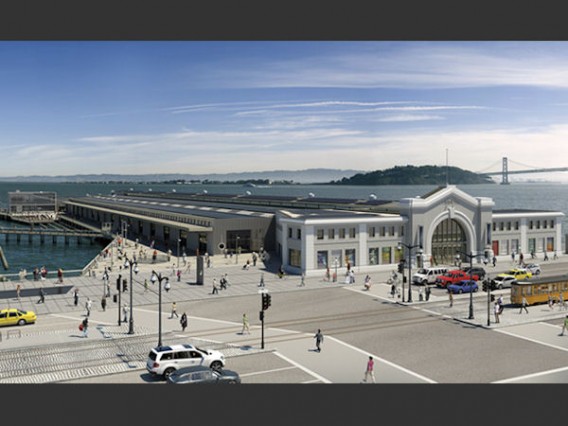
The historic Exploratorium, a science museum in San Francisco, California, has been working on its $300 million project to relocate from the Palace of Fine Arts to Piers 15 and 17 at the heart of the Bay Area’s waterfront Embarcadero. It is the first major development to be undertaken on the waterfront since the San Francisco Giants’ ballpark was built over a decade ago.
The relocated facility has been designed by EHDD Architecture and is being built by Nibbi Brothers, both based in San Francisco, having broken ground in November 2010. It will feature 422,166 square feet of outdoor and indoor space on nine acres of Pier 15, opening with 600 exhibits of which 25 percent will be new installations.

On schedule to officially celebrate its Grand Opening on Wednesday, April 17, 2013, the project is hoping to achieve LEED Gold status and become the largest museum in the world to operate at net-zero energy costs.
Sustainable design and green features abound, such that the new museum will use 57% less energy than comparable buildings and save about $160,000 each year in energy costs.
The natural lighting of the original 1915 pier building will be fully utilized in function and design.
Filtered San Francisco Bay water, which fluctuates seasonally between 50°F and 66°F, will be used for cooling and heating, circulating it through two titanium heat exchangers. Using the water as a heat sink and heat source, the system can efficiently produce chilled and heated water for a radiant slab and has eliminated the necessity of cooling towers.
High-performance and fritted glass, on a covered walkway and the Bay Observatory, limits heat gain.
Energy-star roof provides thermal insulation, and water from roof runoff is captured in cisterns for use in toilets. Unused water is filtered before being returned to the Bay.
Plug-load reduction is utilized throughout to minimize electricity use in exhibits and for lighting and equipment.
Low-emitting materials, along with materials that feature a high percentage of recycled content and certified wood, were used in new construction.
The rooftop solar system is a 1.3 MW high-efficiency design from SunPower that will generate 100% of the building’s required electricity. A lobby display will update every fifteen minutes with data about the system’s performance.
The location is accessible by public transportation, including streetcar, bus, BART, and ferry.
Related Articles on JetsonGreen.com:
LEED Platinum Texas Home Has Net-Zero Water Use
Metal-Wrapped UC Davis West Village is Largest Planned Net Zero Community
World Record Set for Tightest Residential Building

Leave a Reply
You must be logged in to post a comment.